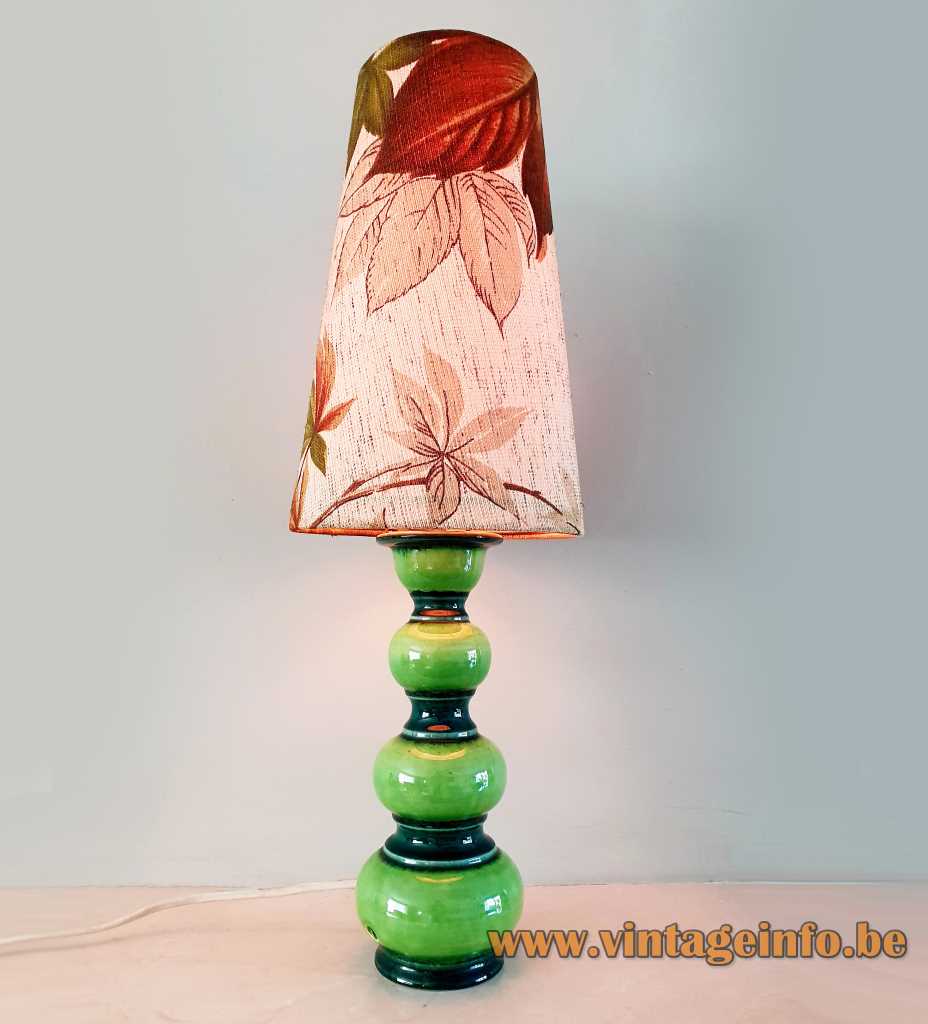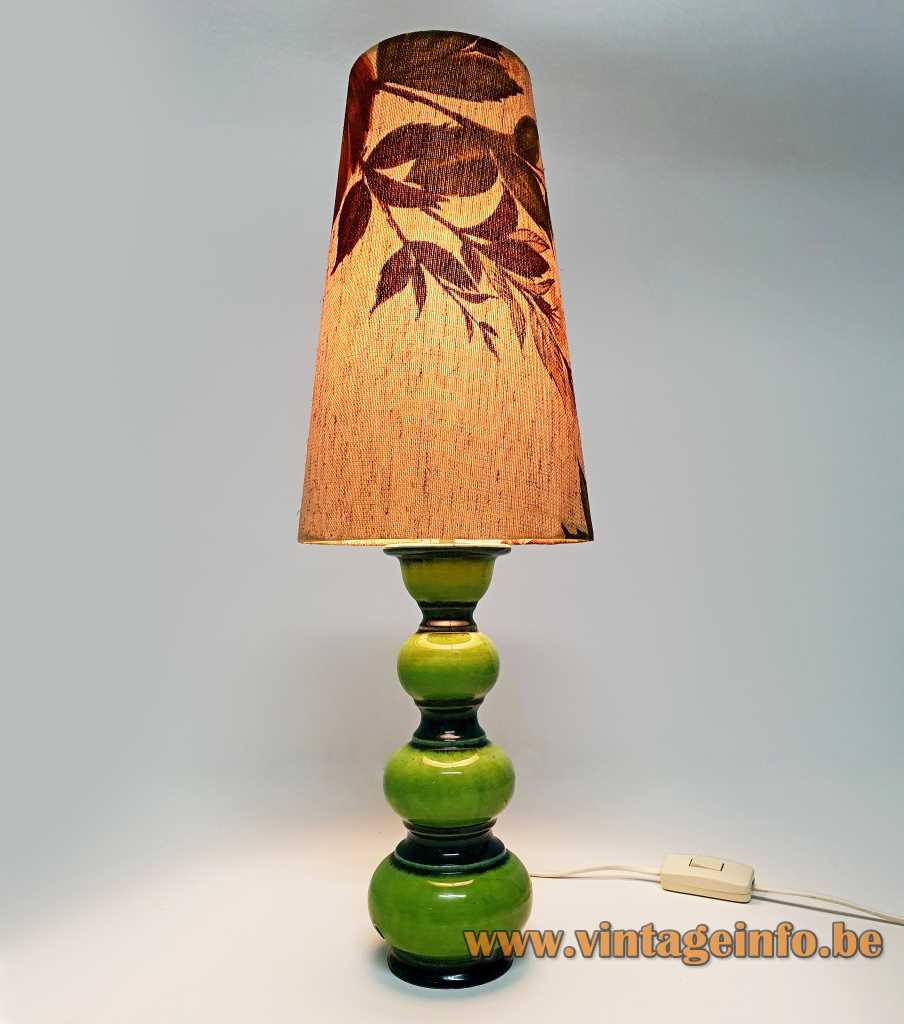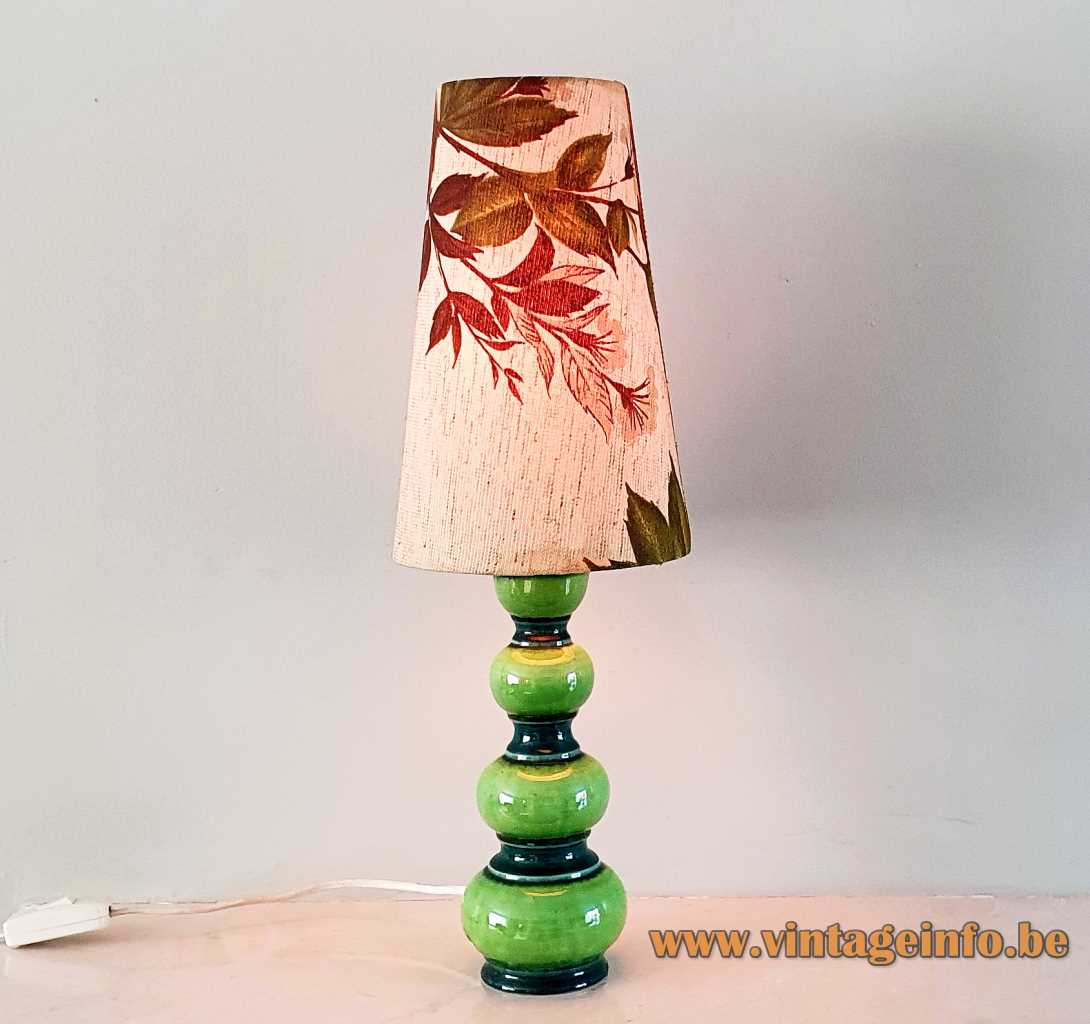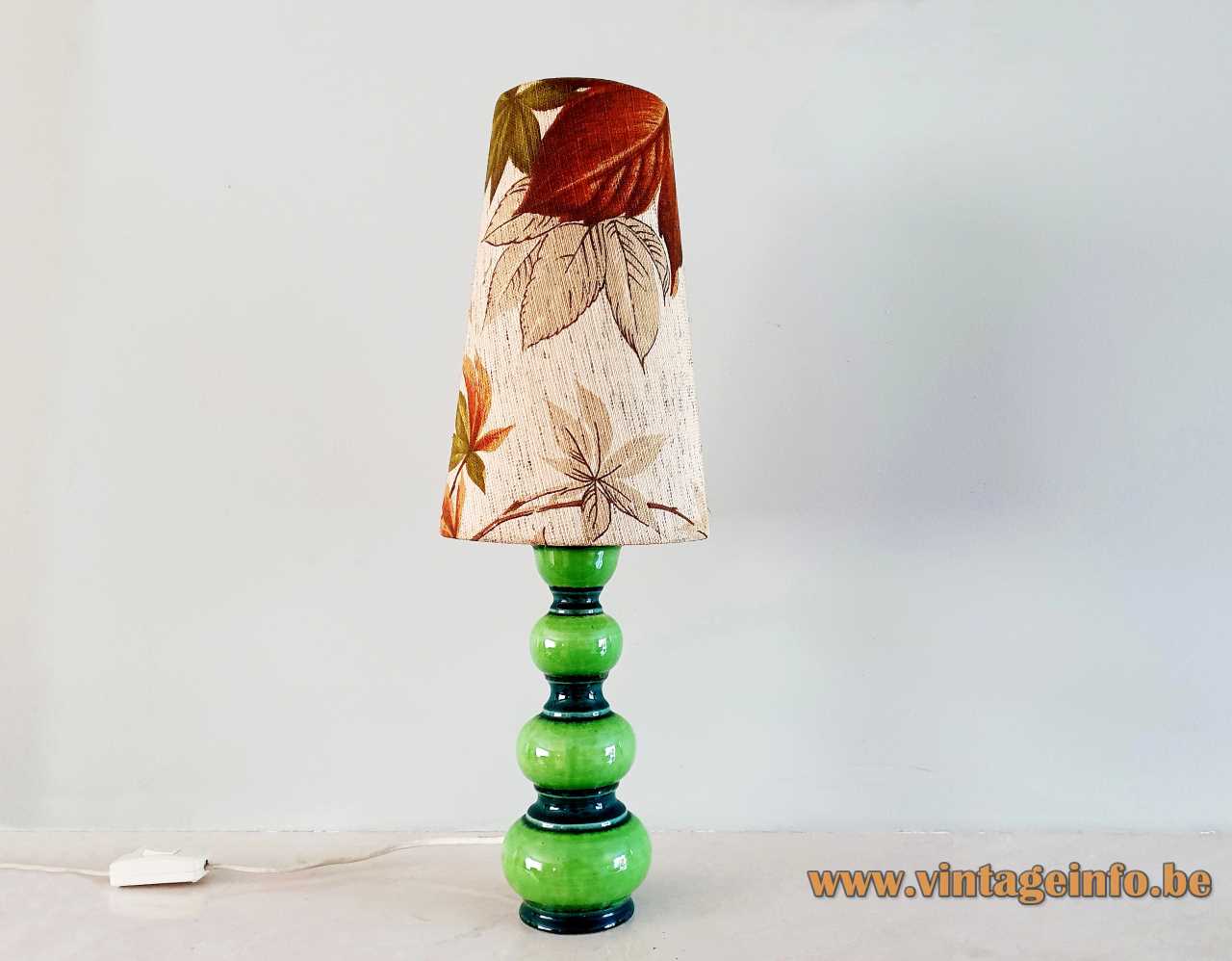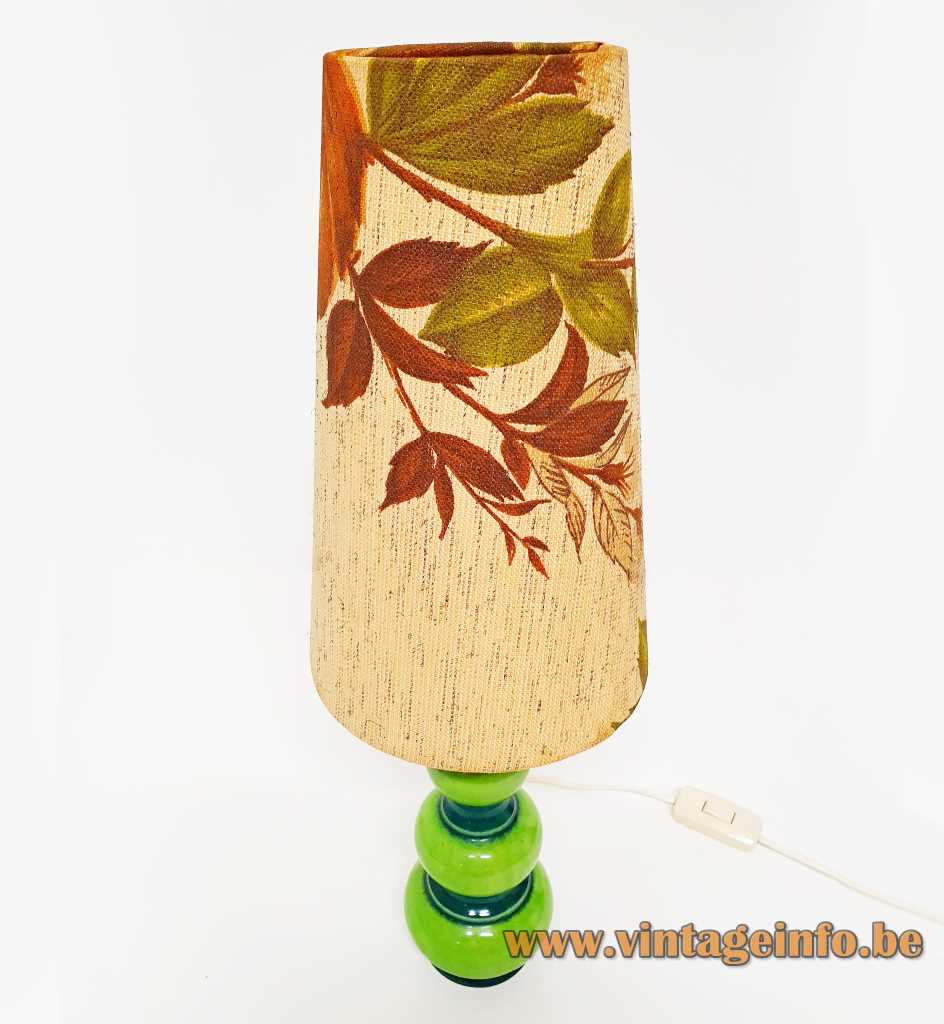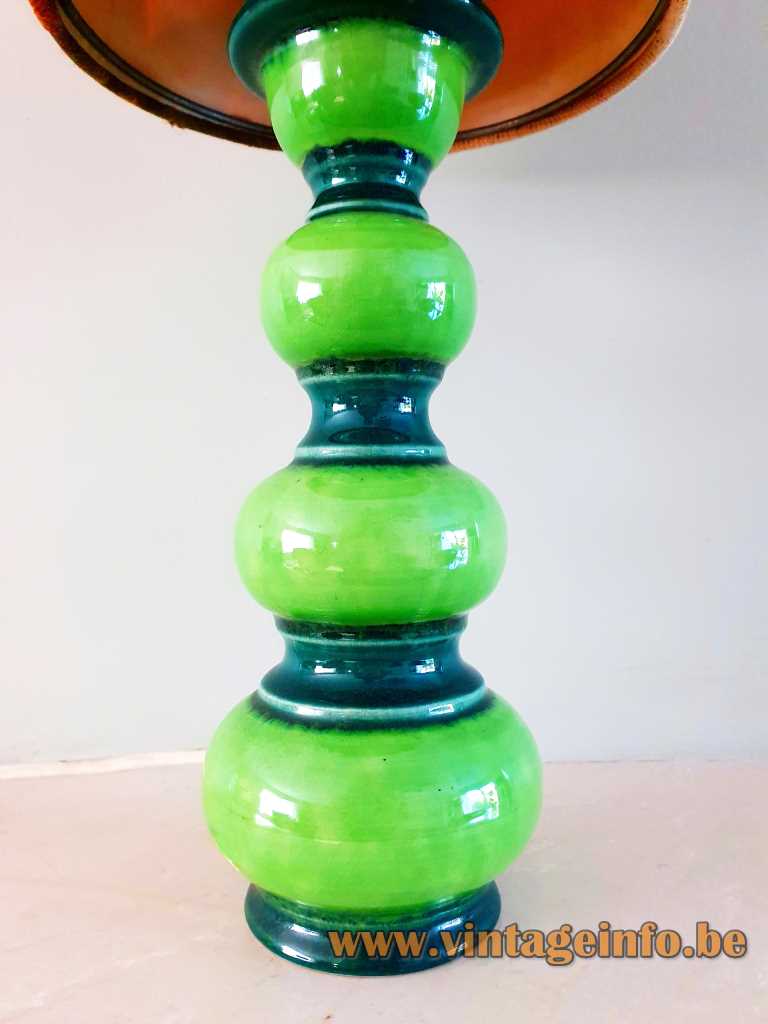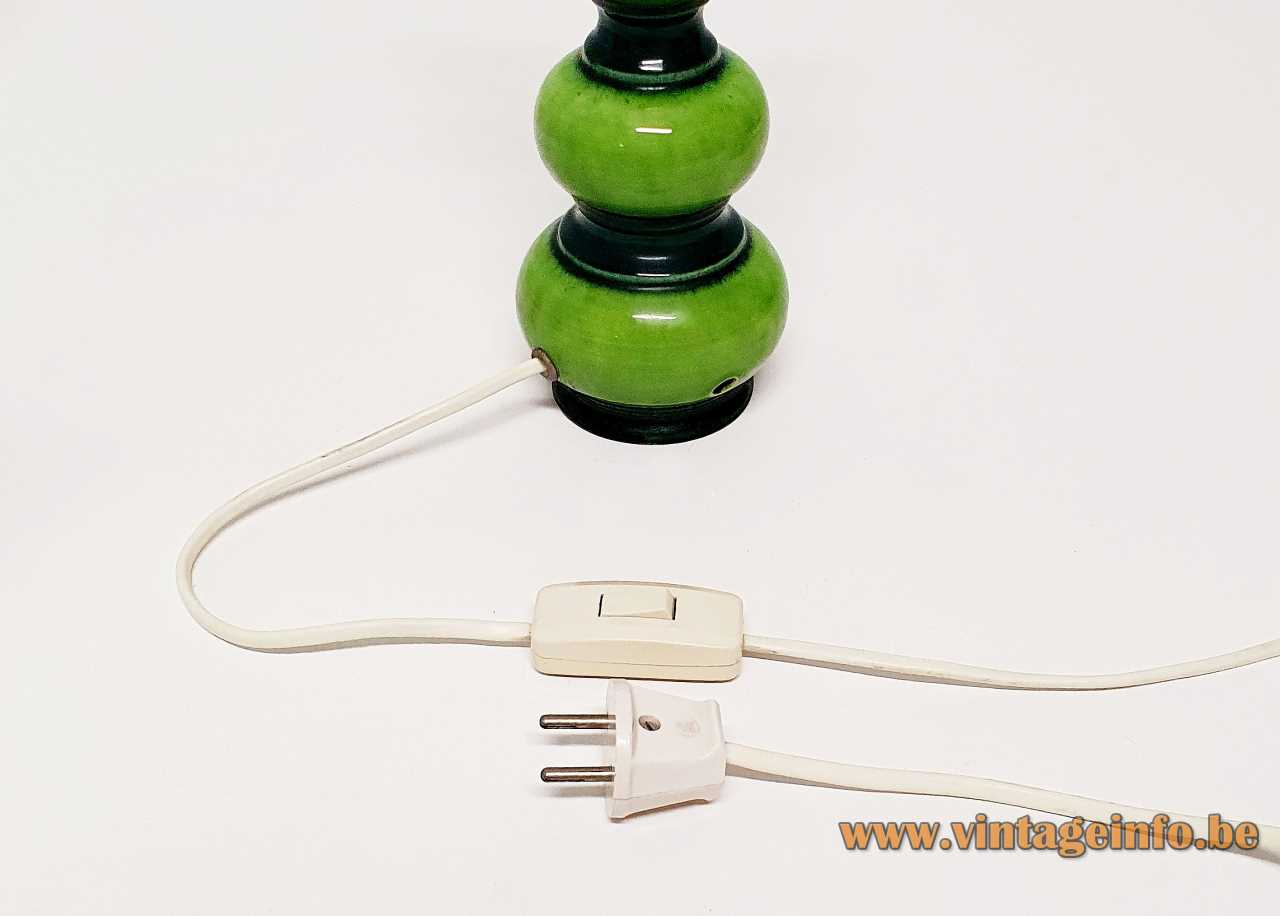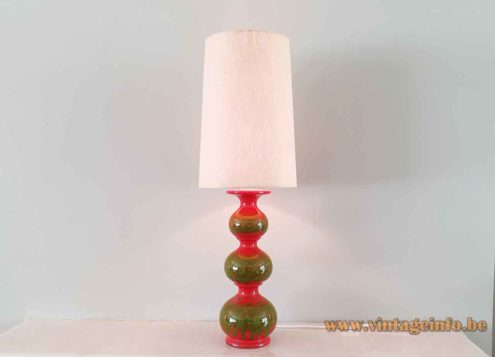Kaiser Leuchten Stacked Globes Table Lamp
Materials: Green glazed round ceramics base in a stacked globes design. Conical tubular fabric lampshade with a flower and autumn leaves print. Bakelite E27 socket.
Total Height: 82 cm / 32.28”
Height: 53 cm / 20.86”
Lampshade: ∅ 18 x 28 cm / 7.08 x 11.02”
Base: ∅ 15 cm / 5.90”
Electricity: 1 bulb E27, 1 x 60 watt maximum, 110/220 volt.
Any type of light bulb can be used, not a specific one preferred.
Period: 1960s, 1970s – Mid-Century Modern.
Designer: To be appraised.
Manufacturer: Gebr. Kaiser & Co. Leuchten KG, Lichttechnische Spezialfabrik (Light technical special factory), Neheim-Hüsten, Germany.
Other versions: This Kaiser Leuchten stacked globes table lamp exists in many colours and sizes. They were made with a flower design on the globes and several colours together. Table lamps exists with more oval shaped globes. Also made as a floor lamp with 8 globes. The floor lamp was made with 3 E27 light bulbs, 2 downwards, 1 upwards oriented. Sold with many different lampshades.
This table lamp was made in the sixties, to see on the wiring and the used lampshade. The switch was replaced with a 1990s, 2000s switch from ELKO.
Jasba
The ceramic base is made by the Germany company Jasba. Sometimes a lamp appears with a Jasba label. Jasba is founded in 1926 by Jakob Schwaderlapp. The company still exists.
Gebr. Kaiser & Co. Leuchten KG
Gebr. Kaiser & Co. Leuchten KG, Lichttechnische Spezialfabrik, Neheim-Hüsten was founded by Hermann Kaiser, who came to Neheim as a worker from Heddinghausen. With a brother and a participant, he became self-employed in 1895.
At the beginning, the company concentrated on the production of nickel-plated and copper-plated lamp parts for the already existing lighting factories. The economic breakthrough came with the development of a very cheap petroleum lamp made of tinplate. During the First World War the production was converted to war materials such as storm batons.
After the war, the manufacture of electric lighting fixtures was expanded, and finally the whole branch of the business was transferred. During the period between the two world wars, the company developed into one of the largest lighting manufacturers in the region. not in the least thanks to the lamps designed by Christian Dell.
As early as 1934 the number of workers was 350. This figure increased to about 600 to 700 employees until the beginning of the Second World War.
During the Second World War the production plants were completely destroyed. After the war a strong enterprise expansion began. Between 750 and 1000 people were temporarily employed.
Towards the end of the 1970s the company was acquired by Thorn Lighting Group. This became the property of an international investment company in 1993, and the remnants of production were transferred to Dortmund in 2000.
Several working lamps/desk lamps designed by Christian Dell are still in production and made by Fritz Hansen.
Kaiser Leuchten Stacked Globes Table Lamp – Green And Red Version
Links (external links open in a new window)
Many thanks to Ger for the beautiful pictures and enthusiasm.
